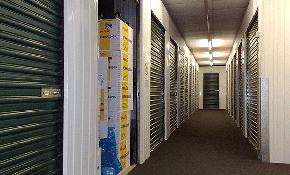As the macro headwinds blow stronger, the clouds gather to create yet another summer drag on the U.S. economy in a pattern similar to the last two years. Over the past few weeks, we have seen a resurgence of European debt issues, deepening of the European economic slump and a downshift in some U.S. economic readings, particularly corporate investments, manufacturing orders and employment growth. To top it off, JP Morgan’s recent surprise outsized loss tied to a hedging strategy and the U.S. Administration’s dispatch of financial experts to work with their European counterparts to stem potential financial contagion has only heightened fear and uncertainty. As I have stated throughout the recovery, these macro issues continue to sap corporate and consumer sentiment and remain the primary culprits that constrain the formation of a more robust natural expansion cycle. Another recession is still unlikely, but an ongoing struggle through gradual and choppy growth appears inevitable.
Exposure to dangers lurking about Europe certainly poses a risk to the United States. The possibility of Greece’s exit from the common currency and the deepening banking crisis in Spain are events that could trigger a global panic and/or capital markets freeze. Further, Europe’s recession resulted in a significant decline in demand, the effects of which have now filtered through to slower growth in U.S. exports. The apparent absence of any systemic solution suggests Europe will remain summer’s primary drag on sentiment, engendering the slide back to conservative hiring trends, and thereby suppressing growth to well below potential as evidenced last month by the diminution in private sector hiring. However, amidst all of these ongoing challenges, economic fundamentals continue to improve, particularly corporate profits, inventory-to-sale ratios, retail sales and even for-sale housing. The pace of growth continues to inch forward, a well-worn and perhaps repetitious statement that represents the disappointingly slow and outright frustrating pace of recovery to businesses and consumers.
Looking beyond the latest soft patch, U.S. banks remain well capitalized (the silver lining to their anemic efforts to lend more and aid the recovery), with marked improvement in profitability, particularly from single-family home refinancing. They are now slowly, but surely, deploying more capital, a trend that partially reduces risk of the worst-case scenario: another recession. In addition, falling oil prices, which free up discretionary spending and improve corporate margins, also buffers the bad news of late. The risk of other worst-case factors persists, of course, such as an oil supply shock, a widespread banking crisis, political inaction that results in the expiration of Bush-era tax cuts, scheduled to sunset at the end of this year, or other not readily quantifiable unknowns. The best scenario would bring at least a mid-range solution to the EU debt problem, which would lift global capital markets and thereby corporate sentiment, resulting in stronger investment and hiring by the third quarter. The irony inherent in the current global and U.S. economic climate as it relates to commercial real estate investment can be summed up as follows:
The pace of economic growth is strong enough to cause a moderate recovery in property fundamentals, but low enough to keep inflation at bay; and, the threats remain just scary enough to keep interest rates at record-low levels.
In other words, if we created three million private sectors jobs per year, a number in alignment with a normal, organic recovery instead of the recent pace of two million, interest rate expectations and capital shifts out of the safety of U.S. Treasuries would most likely result in measurably higher interest rates. Given their extreme lows, a more normalized recovery could actually prompt a rise in interest rates that increase faster than NOI levels. The current environment provides a unique period of extremely low-cost debt, more financing sources, improving occupancies and no threat of overbuilding any time soon. In addition, there has been a jump of more than 40% in property sales volume so far this year over the same period in 2011.
Hessam Nadji is senior vice president and managing director of Marcus & Millichap Real Estate Investment Services. He is also the interim managing director of Institutional Property Advisors, Marcus & Millichap’s special division designed to serve the unique needs of institutional and major private multifamily investors. Contact him at [email protected].

















 Copyright © 2024 ALM Global, LLC. All Rights Reserved.
Copyright © 2024 ALM Global, LLC. All Rights Reserved.